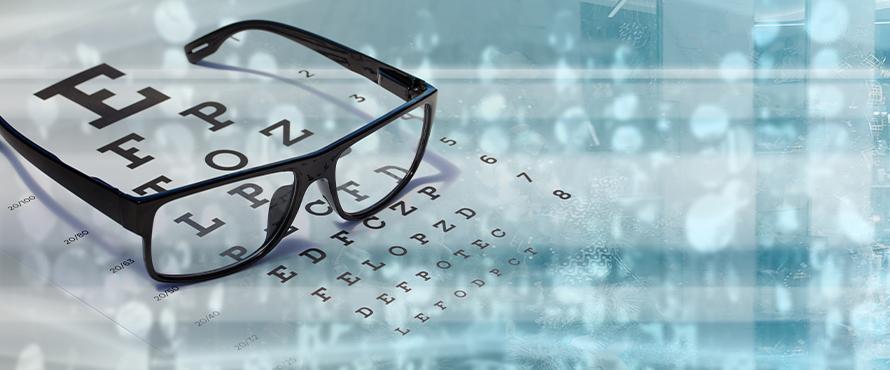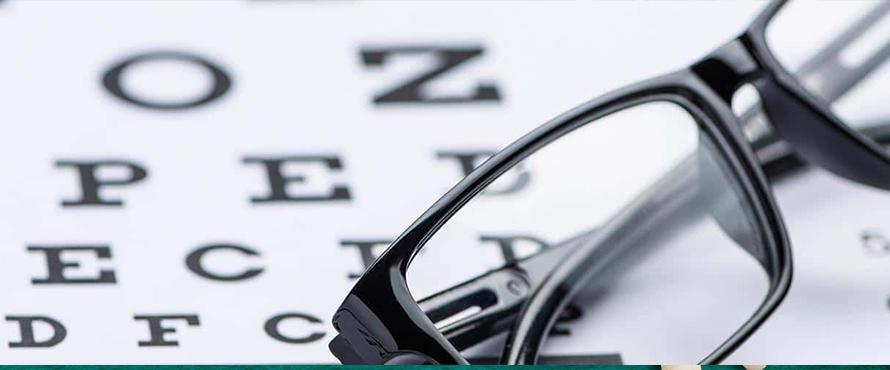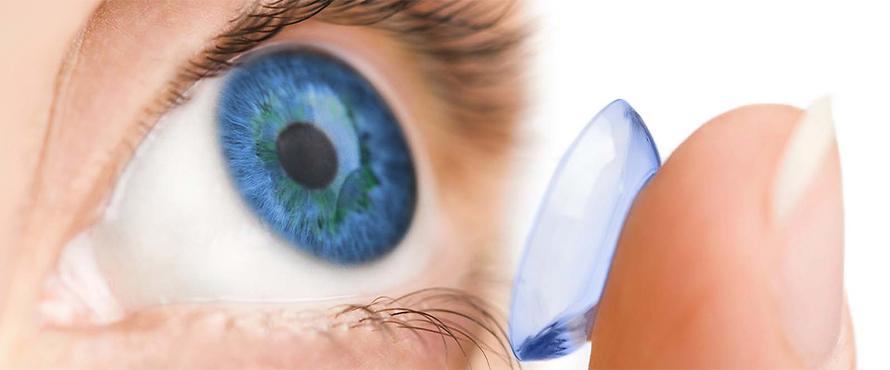Optometry is a rewarding career that involves diagnosing and treating eye-related conditions and providing vision care to patients. Optometrists perform eye exams, prescribe corrective lenses, diagnose eye diseases, and refer patients to specialists when necessary. They also play a crucial role in educating patients on how to maintain healthy vision and prevent eye problems. Optometrists may work in private practice, healthcare clinics, hospitals, or academic settings, and they must obtain a Doctor of Optometry degree (OD), complete a residency program, and obtain licensure in their state through the National Board of Examiners in Optometry (NBEO) exam. Learn more
Note: It is not recommended to self-advise. There are many things to consider besides the required courses such as prerequisites and course sequencing, balancing your schedule, building in time for volunteering, shadowing, research, entrance exam preparation, and planning for the application cycle. See the Director of Pre-professional Advising for individualized long-term planning.
Students who are planning to apply to medical programs will need the following:
- Bachelor’s degree with a competitive cumulative and science GPA
- Required prerequisite coursework which can ;vary from school to school
- Research experience
- Clinical experience and service
- Communication and leadership skills
- Letters of recommendation
- Personal Statement
- Optometry Admissions Test (OAT)
- CASper Exam
- Understand the application timeline
- Illinois Optometry programs
- Pre-Optometry resources
Degree and GPA
A baccalaureate degree is required in any field as long as the prerequisites are met. Biology and Biochemistry majors can meet all prerequisites within their programs. Other majors will still need to take the prerequisite courses in addition to their major and degree requirements.
To be a competitive applicant students must have a strong grade point average (GPA). Professional programs will look at several GPAs:
- Cumulative GPA: all courses and from all schools attended including repeats, remedial courses, and possibly graduate-level courses
- Science GPA: includes biology, chemistry physics, and often math (or BCP/BCPM)
- Prerequisite GPA: calculated only on the prerequisites necessary for that particular professional school program.
- All other GPA: calculated on all courses EXCEPT your science courses
Professional schools do not honor “grade forgiveness” or “grade replacement” for repeated courses. All grades count and repeats are averaged together. There is also no expiration date on courses taken many years ago.
Prerequisite Coursework
The following list indicates the most common classes required or highly recommended by most optometry schools. Applicants should always check directly with each program they are applying to and see the Preprofessional Advisor for more information.
Required
| Writing I & II | ENG 101 & 102 |
| Biology I & II | BIOL 201 & 202 |
| General Chemistry I & I | CHEM 211 & 212 |
| Organic Chemistry I | CHEM 231 |
| Physics I & II | PHYS 201L & 202L |
| Microbiology | BIO 341 |
| Statistics | MATH 275 |
| Calculus | MATH 187 |
| Psychology | PSY 100 or 200 |
Highly Recommended or Required
| SocialScience | Any course (ICO) |
| Anatomy & Physiology I & II | BIO 318 & 319 (Midwestern) |
| Biochemistry | BIO 362 (Midwestern) |
Additional courses to consider
Organic Chemistry II, Calculus II, Cell Biology, and other advanced Biology
Prerequisite Notes
- AP and IB credits are generally not accepted toward prerequisites.
- Community college credits can be viewed differently by each program. Check before applying.
- Some programs do not accept international courses to meet prerequisites. Check before applying.
- Online lab courses are not accepted toward prerequisites. Some programs will not allow any online coursework. There may be some exceptions for courses taken at the height of the COVID-19 pandemic. Check before applying.
- Too many withdrawals (W's) on your transcripts can reflect negatively on your application.
- Some programs have expiration dates on their prerequisites. Make sure you have taken them within the program's time requirements.
Research Experience (HIGHLY Recommended)
Most optometry schools highly recommend participation in research and it can make an applicant stand out. Always check with the optometry schools you are planning to apply to. Subjects can include basic science, biomedical, and clinical research, as well as social science and health systems research. You can reach out to the Student Center for Science Engagement for help finding research opportunities.
Clinical Experience and Service
Applicants are expected to have a good understanding of optometric medicine and are strongly encouraged to shadow and observe a number of practicing optometrists in the clinical setting. Experiences should be meaningful to you on a personal level and reflect your professional goals. Remember that you will be expected to write thoughtful descriptions of your experiences in the application process. Quality over quantity is most important. Programs would rather see commitment and dedication over time than hopping from one short-term experience to the other. Keep a journal not just to document your hours, but to express how various interactions impacted you and your long-term goals.
Shadowing/Clinical Experience
Ask a practitioner to observe their work. This will give you a glimpse into their daily routine and allow you to see if you’re really a good fit for the profession. Shadowing opportunities are notoriously hard to find, so start looking as soon as possible. The most common way to find shadowing opportunities is through networking: ask family, friends, and colleagues if they know a professional that would allow you to shadow them. The more they know about your aspirations as a future health professional, the more likely they are to take you on for shadowing or refer you to a colleague who will.
Professional schools like to see as much hands-on, direct patient care as possible. Competitive applicants complete 100-200 hours of shadowing and medical experience combined. Many students find physicians to shadow through volunteer experiences at medical facilities. You should shadow both M.D. and D.O. doctors. Competitive applicants shadow 3-5 different physicians, spending at least 8-10 hours with each, and have a good balance between primary care and non-primary care physicians.
Volunteer/Community Service
You are preparing for a "helping" profession and it is assumed that you care about those you are planning to serve. Therefore, it is important to have volunteer experiences demonstrating a commitment to service. This should be ongoing throughout your college years. Medical professions often play a big role in the community. Getting involved in your community is a great way to experience this. You can volunteer at a church or other religious facility, community centers, homeless shelters, soup kitchens, food pantries, etc.
Volunteering in a health setting will give you exposure to various practitioners working with patients. Look for opportunities to assist, be part of a team, make decisions, and lead others. There are many ways to volunteer in the health setting such as hospitals, rehabilitation facilities, nursing/retirement homes, doctors’ offices, public clinics, suicide hotlines, hospice centers, crisis centers, or study abroad experiences like medical mission trips.
Communication and Leadership Skills
Get involved on campus through student government, honors programs, or student organizations that are related to your major or future profession such as the Future Health Professionals Club. Get involved by participating in their events. They often conduct enrichment programming and even community service. Try to become an officer in an organization to gain leadership experience. You must take this role seriously though and live up to the commitment you make. You can search all of NEIU's Student Organizations to find others that are a good fit for you.
As a health professional, you will be a leader and team member with your patients, staff, colleagues, and in your community. Other ways to gain leadership experience include offices held in organizations, committee work, leadership in religious activities, coordinating a project; managing, training, and supervising at work, teaching or training experience of any kind, tutoring, as well as peer counseling or mentoring.
Letters of Recommendations (2-4)
You will need at least two strong letters of recommendation ideally from science faculty and relevant professionals that have supervised you in a work, shadowing, or volunteer setting. You will need to give them at least two months’ notice so be sure to research the letter of recommendation requirements for each program you're planning to apply.
Get to know people from these categories so you will feel comfortable asking them to write excellent letters for you.
- Non-relative practicing optometrist
- Academic (Science professor or Pre-Health Advisor)
Learn more on how to request letters of recommendation. Please note that NEIU does not offer a committee or composite letter.
Personal Statement
You will have to write a personal statement/essay as part of your application. It should be about two pages double-spaced and discuss how your life has led you to your desired career. While most personal statements are general in nature and can be used for multiple applications, some programs want applicants to follow specific guidelines and answer prompts that they will provide. Check with the schools you’re applying to and make sure you’re following directions. Look up examples of personal statements and have several people read yours before submitting it. If you would like to talk about why you’re interested in a particular program you can write several statements and customize them as needed.
This is also your opportunity to show the admissions committee who you are beyond your GPA, test scores, and experiences. It communicates what is important to you and explains in-depth your reasons and motivations for pursuing professional school. Additionally, a personal statement can help explain any gaps in education or experiences, as well as any weaknesses in an application.
Learn more about how to write Personal Statements.
Optometry Admissions Test (OAT)
The Optometry Admission Test (OAT) is a comprehensive exam that enables optometry education programs to assess the knowledge and preparedness of program applicants. OAT test results are accepted by all optometry schools in the U.S. and Canada. The four-part test is administered year-round by Prometric Test Centers in the U.S. and its territories, including Guam, Puerto Rico, and the U.S. Virgin Islands, as well as Canada. The Association of Schools and Colleges of Optometry (ASCO) is the governing body for the OAT. The test is implemented by the Department of Testing Services (DTS), which is a shared service of the American Dental Association.
For complete information on all aspects of the OAT, refer to the OAT Candidate Guide.
The OAT consists of multiple-choice questions presented in English, and includes a battery of four tests:
- The Survey of the Natural Sciences (Biology, General Chemistry, and Organic Chemistry)
- Reading Comprehension
- Physics
- Quantitative Reasoning Tests
OAT preparation resources
Casper Exam
The Altus Suite, which includes CASPer Snapshot, and Duet, is a multi-part assessment that evaluates applicants for people skills in a fair and reliable way while giving applicants multiple opportunities to showcase their unique personal and professional strengths. It's an online, open-response situational judgment test (SJT) required by very few optometry schools at this time. It asks what you would do in a tough situation, and more importantly, why. This helps determine the behavioral tendencies of applicants pursuing people-centered professions. Some schools may only require CASPer and not the other evaluations in the suite.
CASPer assesses for 10 characteristics: Collaboration, Communication, Empathy, Equity, Ethics, Motivation, Problem-Solving, Professionalism, Resilience, and Self Awareness. It is a 60-90 minute virtually proctored assessment, made up of 12 sections. Each section contains a video-based or word-based scenario and three open-ended questions. Test takers have five minutes to type their responses to all three questions. CASPer Website.
Application Timeline
The application cycle for optometry school begins about 15 months before you intend on enrolling, in the summer of the year prior to enrollment. However, the exact timing depends on when you will take the OAT, complete prerequisites, etc. Meet with your pre-professional advisor to develop a long-term plan for applying. Keep in mind that course scheduling, extra-curricular activities, exam preparation, and even your personal and family life can all contribute to the need of having flexibility in your timeline.
The application service, OptomCAS, opens in June and the school deadlines can go through May of the following year. You should have selected which optometry schools to apply to, have contacted those who will write letters of recommendation for you, ordered official transcripts from all colleges attended, and completed your personal statement by this time. Make sure you pay attention to specific deadlines for the schools to which you are applying. Application services verify primary applications and notify applicants of verification or problems.










